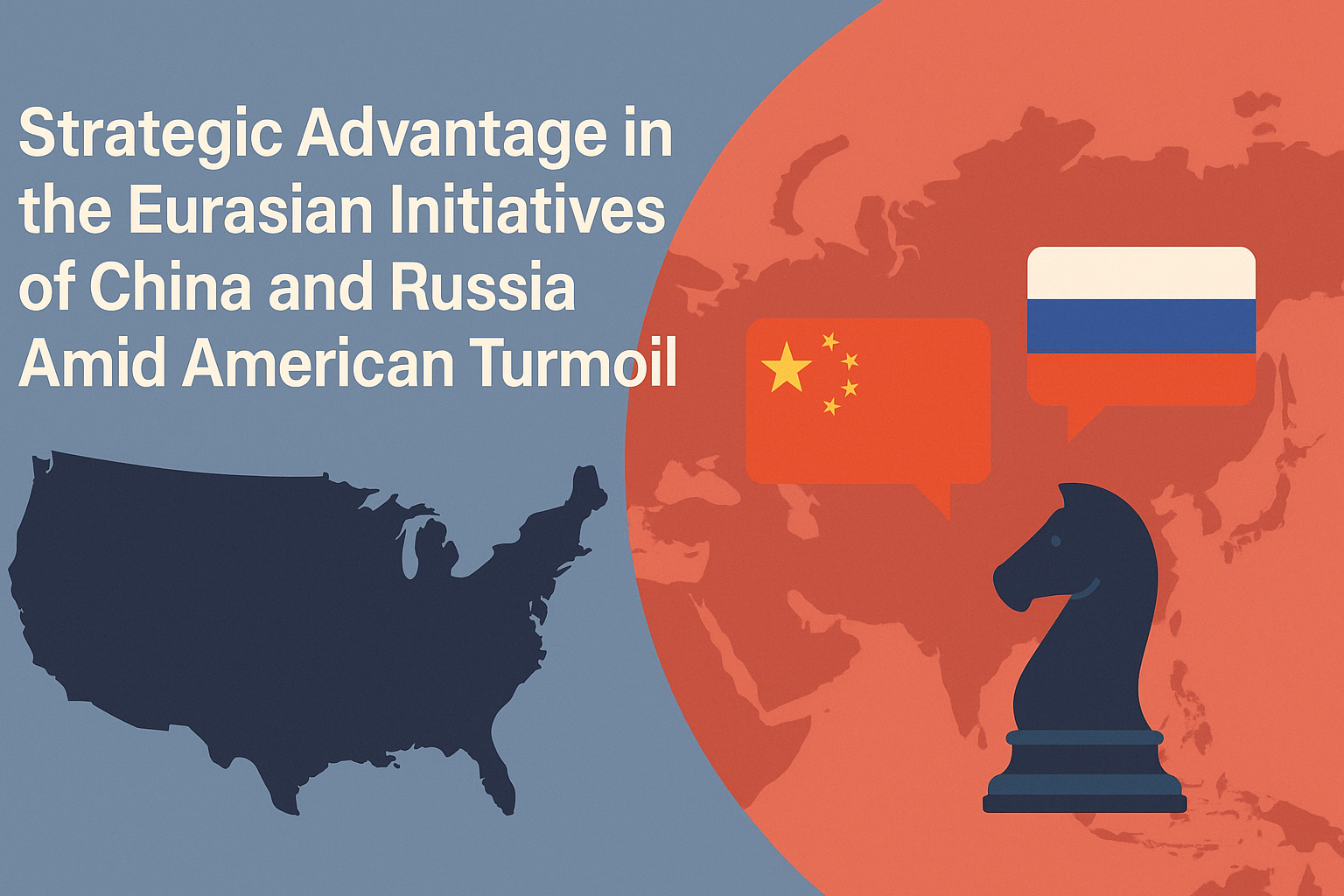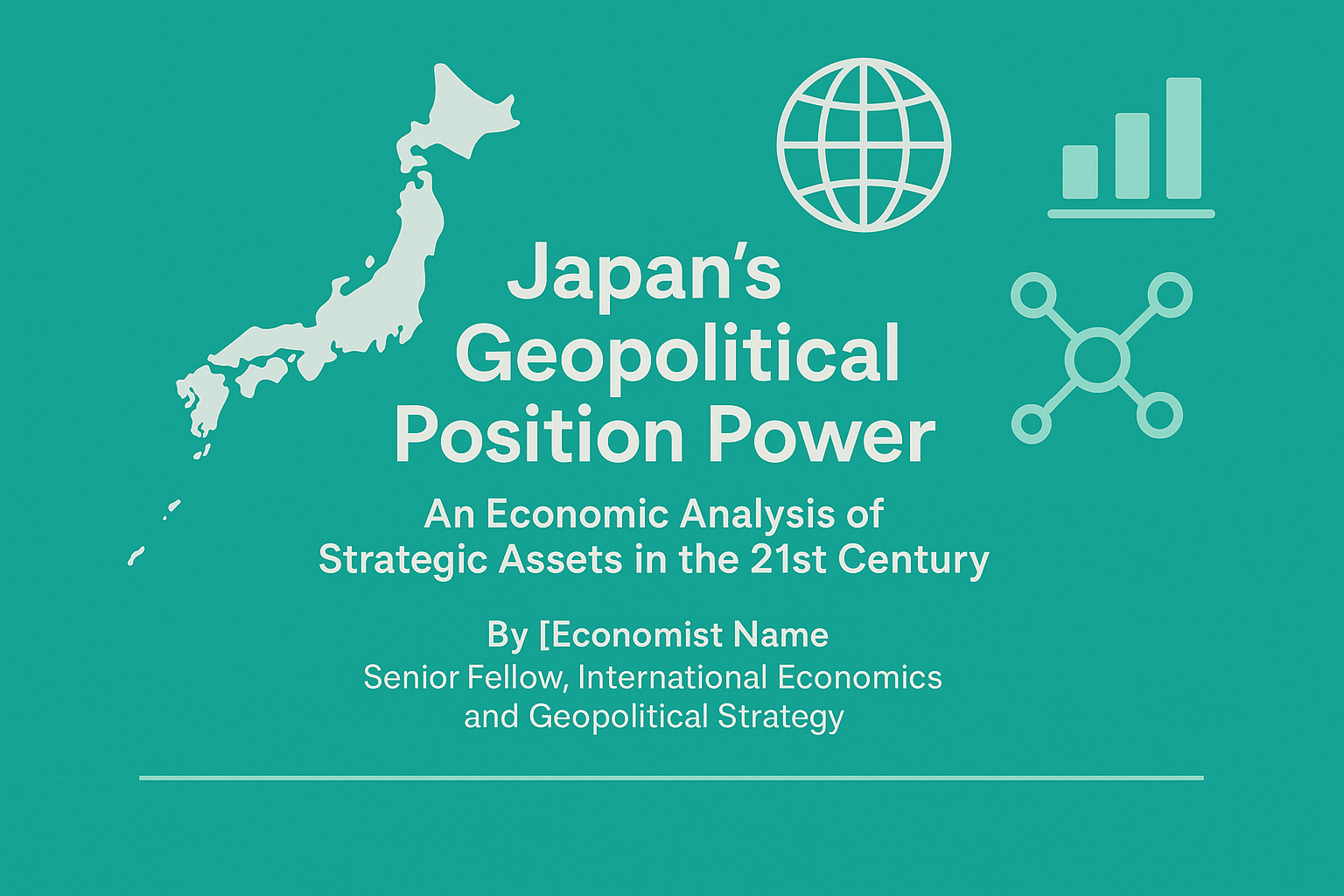This report analyzes how China and Russia are leveraging the political instability and global retrenchment of the United States to advance their respective Eurasian strategies. Through initiatives like the Belt and Road and the Eurasian Economic Union, both powers aim to reshape the global order, expand their influence, and establish a multipolar world.
Introduction
As the United States faces increasing political division, social unrest, and a tendency toward isolationism, China and Russia are advancing their respective Eurasian initiatives—namely, the Belt and Road Initiative (BRI) and the Eurasian Economic Union (EAEU). These frameworks aim to reshape the global order and secure their strategic advantage. This report analyzes how the weakening of American global leadership aligns with and enables the rise of these Eurasian strategies, and what strategic advantages China and Russia aim to achieve through them.
U.S. Turmoil and the Rise of Eurasian Initiatives
The U.S. is grappling with volatile domestic politics, oscillating foreign policy approaches between administrations, and increasing skepticism toward multilateralism. As American credibility wanes on the international stage, China and Russia are seizing the opportunity to fill the power vacuum by promoting alternative regional and global frameworks rooted in the Eurasian continent [5][3][10].
China’s Belt and Road Initiative (BRI) and Strategic Advantages
Expansion of Economic Sphere and Influence
Through the BRI, initiated in 2013 by President Xi Jinping, China is building a vast transcontinental economic corridor encompassing Asia, Europe, and Africa. With large-scale investments in infrastructure—such as railways, ports, roads, and telecommunications—China enhances trade routes and deepens its economic influence over participating countries [1][2][8].
By offering an alternative to U.S.-led partnerships like the TPP or IPEF, BRI enhances China’s standing among developing and emerging economies, particularly in Europe, a crucial export market.
Security and Geopolitical Interests
The BRI also serves China’s strategic objectives by stabilizing supply chains, ensuring energy security, and securing trade routes. Projects in Central and South Asia enable China to project power in areas traditionally within Russia’s sphere of influence, further entrenching its dominance through economic means [2][6][8].
Reshaping International Order
The BRI functions as a mechanism for restructuring the global order. With parallel institutions such as the AIIB and dispute settlement mechanisms, China positions itself as a rule-maker rather than a rule-taker. The initiative enhances China’s leadership role, especially among Global South nations, countering U.S. sanctions and technological blockades [8].
Russia’s Eurasian Economic Union (EAEU) and Strategic Advantages
Integration of the Former Soviet Bloc
Russia, through the EAEU, promotes economic and institutional integration with former Soviet states such as Belarus, Kazakhstan, Armenia, and Kyrgyzstan. This counters Western sanctions and builds a protective economic framework. The EAEU is also expanding its reach through free trade agreements with countries like Iran [4][9].
Geopolitical Security
Militarily, Russia relies on the Collective Security Treaty Organization (CSTO) to sustain its influence in the former Soviet region. Following the Ukraine crisis, Russia has increasingly merged its security and economic strategies to maintain a buffer against NATO expansion [6][9].
The Greater Eurasia Concept and Reordering of Global Power
Russia’s “Greater Eurasia” vision complements the BRI by fostering strategic space that spans Europe, the Middle East, and Asia-Pacific. Leveraging its central position in the Eurasian landmass, Russia enhances its geostrategic advantage and asserts itself as a key architect of a multipolar global order [3][10].
Sino-Russian Cooperation and Strategic Advantage
Anti-U.S. Alliance and Economic Complementarity
Facing common pressure from the U.S., China and Russia have deepened their strategic partnership. Russia, rich in natural resources, complements China’s capital and technological strength. Their collaboration through institutions like BRICS and the Shanghai Cooperation Organization (SCO) fosters a non-dollar economic sphere and expands influence over Global South countries [5][3].
Balance of Competition and Cooperation
Despite regional rivalry in Central Asia and the Arctic, China and Russia have maintained strategic unity against the U.S. In the Arctic, for example, shared interests in resource development and trade routes have strengthened cooperative frameworks [5][6][7].
Conclusion
With the U.S. experiencing a decline in international leadership, China and Russia are proactively building alternative orders centered around the Eurasian continent. China advances its influence through economic expansion and development initiatives, while Russia wields geopolitical and military leverage.
Together, despite latent competition, the two powers are forging a united front against American hegemony and leading efforts to build a multipolar world order. These trends will likely reshape the global balance of power, posing strategic challenges to Western countries, including Japan [29].
References
[1]https://www.mizuhort.co.jp/publication/mhri/research/pdf/research/r151001asia.pdf
[2] https://www.digima-japan.com/knowhow/china/16660.php
[3] https://www.spf.org/iina/articles/abiru_01.html
[4] https://www3.nhk.or.jp/news/html/20231226/k10014299721000.html
[5] https://www.worldtimes.co.jp/global/20250519-195440/
[6] https://kusanomido.com/study/overseas/106408/
[7] https://www.jiia.or.jp/column/ChinaReport33.html
[8] https://japanknowledge.com/contents/nipponica/sample_koumoku.html?entryid=3443
[9] https://www.nids.mod.go.jp/publication/perspective/pdf/j2023/j03.pdf
[10] https://ippjapan.org/archives/1967


